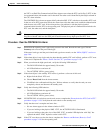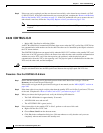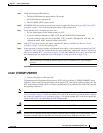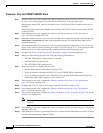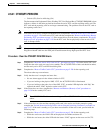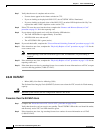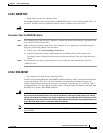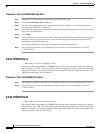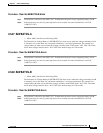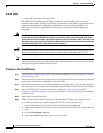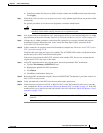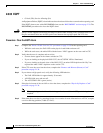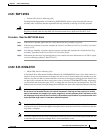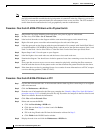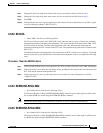
2-46
Cisco ONS 15327 Troubleshooting Guide, R3.4
March 2004
Chapter 2 Alarm Troubleshooting
Alarm Procedures
Procedure: Clear the DS3-MISM Condition
Step 1 Display the CTC card view for the reporting (active) XTC-28-3 card.
Step 2 Click the Provisioning > DS1 > Line tabs.
Step 3 For the row on the appropriate port, verify that the Line Type column is set to match the expected
incoming signal (ESF, D4, or unframed).
Step 4 If the Line Type drop-down menu does not match the expected incoming signal, select the correct Line
Type in the drop-down menu.
Step 5 Click Apply.
Step 6 If the condition does not clear after the user verifies that the provisioned line type matches the expected
incoming signal, use an optical test set to verify that the actual signal coming into the ONS 15327
matches the expected incoming signal.
For specific procedures to use the test set equipment, consult the manufacturer.
Step 7 If the alarm does not clear, log onto http://www.cisco.com/tac for more information or call TAC
(1-800-553-2447).
2.6.45 EHIBATVG-A
• Minor (MN), Non-Service Affecting (NSA)
The Extreme High Voltage Battery A (EHIBATVG-A) alarm occurs when the voltage level on battery
lead A exceeds –56.7 VDC. The alarm indicates that the voltage on the battery lead is extremely high,
and power redundancy is no longer guaranteed. The alarm remains until the voltage remains under –56.7
VDC in the normal range for 120 seconds.
Procedure: Clear the EHIBATVG-A Alarm
Step 1 The problem is external to the ONS 15327. Troubleshoot the power source supplying battery lead A.
Step 2 If the alarm does not clear, log onto http://www.cisco.com/tac for more information or call TAC
(1-800-553-2447).
2.6.46 EHIBATVG-B
• Minor (MN), Non-Service Affecting (NSA)
The Extreme High Voltage Battery B (EHIBATVG-B) alarm occurs when the voltage level on battery
lead B exceeds –56.7 VDC. The alarm indicates that the voltage on the battery lead is extremely high,
and power redundancy is no longer guaranteed. The alarm remains until the voltage remains under –56.7
VDC in the normal range for 120 seconds.




